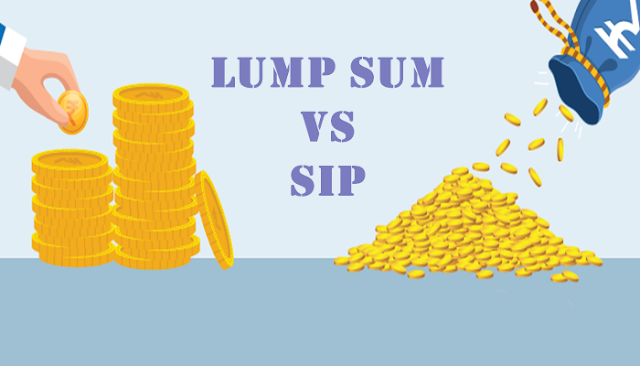Introduction
There exists a common dilemma among every investor in determining the best possible method for investment, securing satisfactory returns with relatively low risks. The experts opine that is best to inculcate the habit of investment as early as possible to secure a satisfactory financial portfolio in the long run.
In the mutual fund investment market, the principal tussle exists between lump sum and SIP. Similar to bank deposits that come in recurring deposits and fixed deposits, the mutual fund market also offers lump sum investments and SIP or systematic investment plans. In this article, we will make a comparative analysis of these two investment strategies.
An investment strategy in tax-saving mutual funds
Under Section 80C of the IT Act, 1961, an equity-linked savings scheme is a plausible mutual fund investment option. There are two strategies for investing here: either through lump sum or SIP.
Lump sum investment
As the name suggests, this is a single-time investment option. However, it only becomes possible only if you possess a substantial disposable amount combined with a higher risk tolerance capacity. This method is generally chosen by investors seeking investment in equity-centric mutual funds. trying to avoid the risks with market timing and leverage volatility of the market. The concerned lump sum gets eventually invested in befitting debt funds and accordingly transferred to equity funds, depending on the market conditions.
SIP
This involves investing in the market in a staggered manner. It involves a regular investment of a small but fixed amount at fixed intervals. It is ideal for those who do not possess a lump sum investment option. The investment tenure, amount, and periodicity of the concerned investment are sorted beforehand. The frequency can range between daily, weekly, monthly, bi-monthly, quarterly, half-yearly, or yearly depending on the nature of the plan chosen. Investors can also benefit through rupee-cost averaging implying that they are free to buy more number of units when the market is low and vice versa. This enhances averaging of the cost incurred for purchasing one unit of the concerned scheme.
Considering the recent trend, the popularity of SIPs has enhanced significantly, especially among the comparatively younger generation.
Lump sum calculator
A lump sum calculator offers a clear assessment of the estimated returns, depending on the current market circumstances, essentially helping you in more efficient financial management, and aiding and avoiding human errors.
The standard formula followed by a lump sum calculator for calculating mutual fund investment returns is:
A= P (1 + r/n) ^ nt, where, A= estimated returns; P=present investment value; r= estimated return rate; t= tenure; n= no. of compound interests per year.
SIP calculator
Based on the figures entered, a SIP calculator reveals the estimated maturity amount, considering the investment amount, frequency, tenure, and estimated returns.
The standard formula as followed by an online SIP calculator is:
FV = P [(1+i)^n-1]*(1+i)/i, where, FV= future value or maturity amount, P= the fixed amount invested through SIP; i= compounded return rate; n=investment duration in months; r=expected return rate.
Advantages of lump sum mutual fund investments
Some of the basic advantages of lump sum investment include:
1. Investing a considerable amount: This allows you to invest a significant amount in the mutual fund market. Therefore, if the market grows, the returns are also significantly increased.
2. Perfect for long-term: Lump sum investment in mutual funds is perfect for long-term plans like 10 or 15 years, with a broader financial goal to achieve.
3. Convenient investment: Once the investment is completed, you need not have to worry about it any further like remembering the investment dates, etc.
Advantages of SIP
Some of the significant advantages of SIP are:
1. No constant watch needed: Novice investors mostly remain unsure about when to set foot in the market. Lump sum investment always runs the risk of significant loss during a market crash. However, with SIP, your investment is spread over time and only a certain portion of it faces market volatility.
2. Rupee cost averaging: Through SIP, your investment can experience different market cycles. During a low phase, you can buy more units and vice versa. It eventually reduces the cost of every single unit.
3. Investment habit: SIP inculcates the habit of regular investment, making you financially more disciplined.
4. Ideal for freshers: When you have just secured a job, SIP is the ideal platform to begin your investment journey. You can start with a meagre amount of just INR 500 and tread accordingly.
SIP v/s Lump sum
|
PARAMETER |
LUMP
SUM |
SIP |
|
No.
of investments |
Single time |
Regular (variable or fixed) |
|
Tenure
of investment |
Subject to the market volatility and the investor’s
investment goals |
Subjected to the investor’s investment
goals, but comparatively immune to market conditions |
|
Cost
of investment |
High |
Low |
|
Average
costs |
No rupee cost-averaging benefits |
Enjoy rupee cost-averaging benefits as the
investment spans various market cycles |

No comments:
Post a Comment